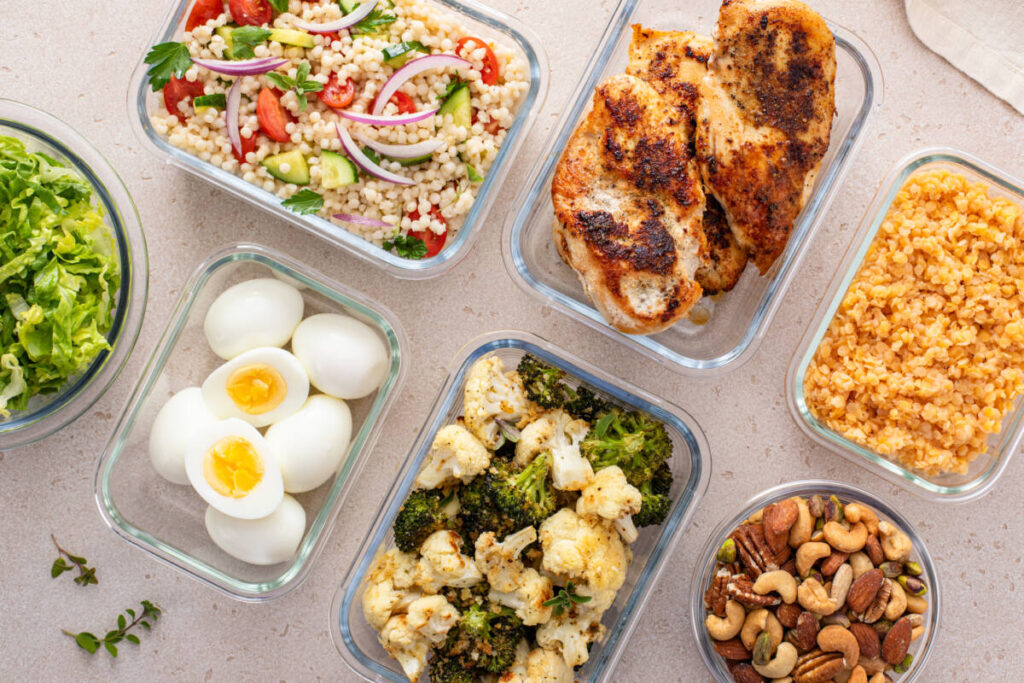
College life is hectic and often comes with a tight budget, making it challenging to maintain a healthy diet. However, mastering the art of meal prepping can save you both time and money while ensuring that you eat nutritious meals. This guide dives into the best meal prep hacks tailored for college students, helping you stretch your dollar and enjoy home-cooked meals throughout the week.
Why Meal Prepping Matters for College Students
Meal prepping involves planning, preparing, and portioning meals in advance. Here’s why it’s a game-changer for students:
- Saves Money: Buying ingredients in bulk is far cheaper than dining out or ordering takeout.
- Reduces Food Waste: Prepping meals ahead means you’re more likely to use all your groceries efficiently.
- Saves Time: Cooking once or twice a week eliminates the need for daily meal prep.
- Encourages Healthier Eating: Having ready-to-eat meals on hand reduces the temptation to opt for unhealthy snacks or fast food. Learn more about the negative consequences of processed foods here.
Essential Meal Prep Tools
Investing in a few key items will make your meal prep journey smoother:
- Reusable Containers: Choose microwave-safe and BPA-free containers in various sizes.
- Slow Cooker or Instant Pot: Perfect for cooking large batches of meals with minimal effort.
- Knife Set: A good set of knives speeds up chopping and dicing.
- Measuring Cups and Spoons: Essential for portion control and following recipes.
- Freezer Bags: Ideal for storing prepped meals or individual ingredients.
Meal Prep Hacks for College Students
1. Plan Your Meals for the Week
Start by deciding what meals you’ll eat for the week. Consider:
- Your class schedule
- Ingredients you already have
- How many meals you need to prepare
Pro Tip: Use a meal planning app like Mealime or Yummly to simplify the process.
2. Stick to Budget-Friendly Ingredients
Choose ingredients that are cost-effective and versatile:
- Proteins: Eggs, chicken thighs, canned tuna, and beans
- Carbs: Rice, pasta, sweet potatoes, and oats
- Veggies: Frozen vegetables, carrots, spinach, and onions
- Snacks: Peanut butter, bananas, and popcorn
3. Shop Smart
Save money by shopping strategically:
- Buy in Bulk: Purchase staple items like rice, pasta, and canned goods in large quantities.
- Look for Sales: Check weekly flyers and coupons from local grocery stores.
- Visit Farmers’ Markets: Fresh produce is often cheaper and better quality.
4. Cook in Batches
Prepare large portions of food that can be divided into individual servings:
- Example 1: Cook a big pot of chili or soup that lasts several meals.
- Example 2: Roast a tray of chicken, veggies, and potatoes for a complete meal.
5. Use One Ingredient in Multiple Dishes
Stretch ingredients by using them in various recipes:
- Cook a large batch of rice: Use it in stir-fries, burrito bowls, or as a side dish.
- Roast a whole chicken: Use the meat for salads, sandwiches, or soups.
6. Freeze for Later
Not everything needs to be eaten immediately. Store meals or ingredients in the freezer for future use.
Freezer-Friendly Ideas:
- Soups and stews
- Cooked grains
- Chopped vegetables
7. Prep Snacks Ahead
Having ready-to-eat snacks reduces the urge to buy expensive, processed options:
- Portion nuts or trail mix into small bags.
- Chop fruits and veggies for grab-and-go snacks.
- Make energy bites with oats, peanut butter, and honey.
8. Label and Organize
Label each container with the meal name and date to avoid confusion and food spoilage. Keep your fridge and freezer organized for easy access.
Sample Meal Prep Plan for a Week
Breakfast
- Overnight Oats: Mix oats, milk, yogurt, and your favorite toppings in jars.
- Egg Muffins: Bake eggs with veggies and cheese in a muffin tin.
Lunch
- Grain Bowls: Combine cooked quinoa, roasted veggies, and grilled chicken.
- Wraps: Use tortillas to make turkey and spinach wraps.
Dinner
- Pasta Bake: Mix pasta, marinara sauce, and cheese, then bake.
- Stir-Fry: Sauté veggies, tofu, or chicken with soy sauce and serve over rice.
Snacks
- Greek yogurt with granola
- Apple slices with peanut butter
- Homemade popcorn
Overcoming Common Challenges
1. Limited Kitchen Space
If you’re in a dorm or small apartment:
- Use a mini-fridge or share space with roommates.
- Opt for meals that require minimal cooking, like salads or wraps.
2. Time Constraints
Balance meal prepping with a busy schedule:
- Dedicate 1-2 hours on Sundays to prepare your meals.
- Use appliances like slow cookers to minimize hands-on cooking time.
3. Staying Motivated
Keep meal prep interesting by:
- Trying new recipes weekly.
- Prepping meals with friends to make it fun.
- Rewarding yourself with a special treat for sticking to your plan.
Financial Benefits of Meal Prepping
1. Lower Grocery Bills
Buying in bulk and sticking to a plan prevents impulse purchases and reduces costs.
2. Avoid Expensive Takeout
Home-prepped meals are significantly cheaper than restaurant or delivery options.
3. Maximize Ingredients
By using every part of what you buy, you waste less and save more.
Meal Prep Hacks for College Students
Meal prepping doesn’t just save you money; it also helps you build healthier habits and manage your time better. With the hacks and tips outlined here, you can make meal prep an enjoyable and cost-effective part of your college routine.
Looking for more ways to save as a student? Check out our blog on Budgeting Tips for College Students.